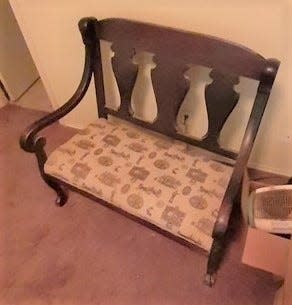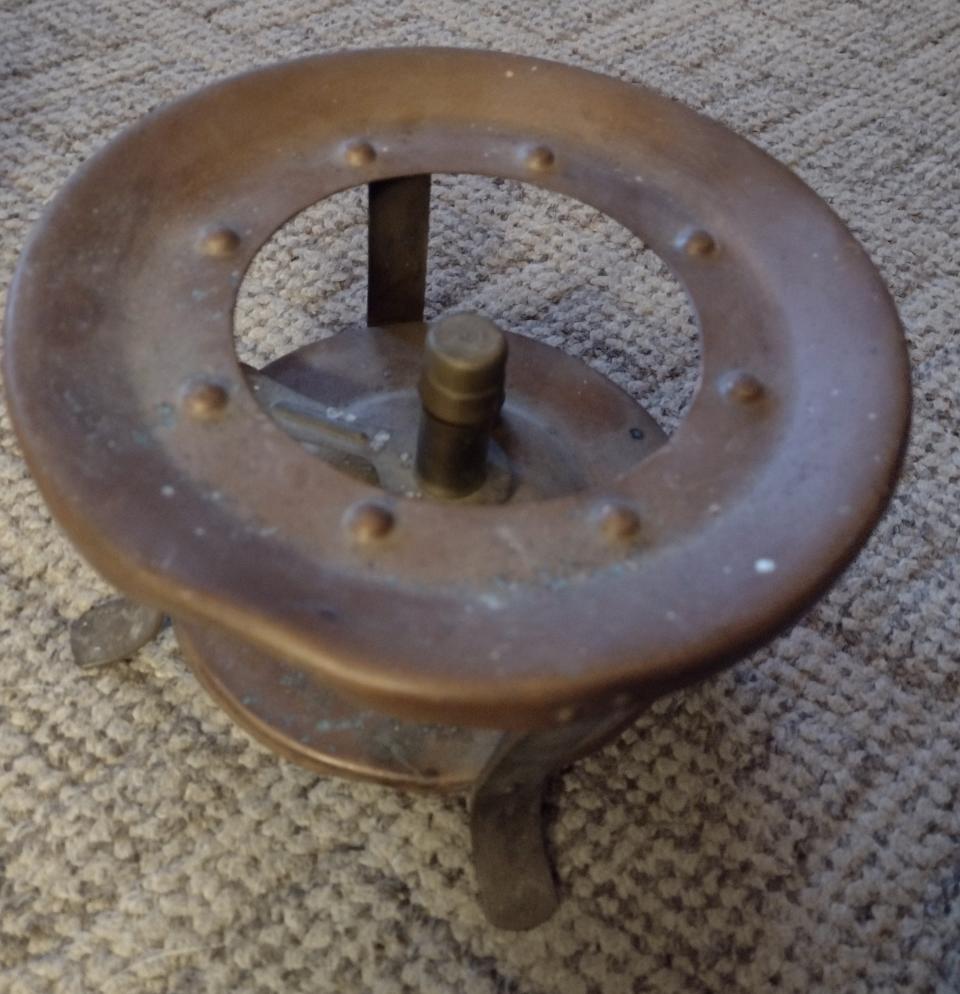Settee was part of a parlor set and made in America

Q: Would you please tell me if this settee has any value? It also has a matching chair. This belonged to my husband's grandparents who lived in Alabama. My husband is 79 if that helps with dating this piece of furniture. Thank you for your help. — R.D., Internet
A: The settee you have was made in America, possibly in Grand Rapids, Michigan. The time of production was the early 20th century. It was originally part of a parlor set. Parlor sets generally consisted of one settee, one or two armchairs, a rocking chair and four to six side chairs. Parlor sets were popular during the last half of the 19th century and made by numerous furniture manufacturers in large quantities. The settee you have is currently not what the antique furniture marketplace is interested in. If you were thinking of selling, now is not a good time.

Q: I have the single-burner camp stove in the photo. I am looking for the history and value, please. Do you know much about this? I thought it might be from World War I or WWII. — R.R., Internet
A: There is no specific collector interest in your camp stove. So, relative to dollar value it would be in the catch-as-catch-can category. Various types can be found for sale on the Internet. The words made in Germany stamped on the bottom indicate it was produced for export. The time of production is likely between World War I and WWII. I do not think it was directly issued for any military use. However, here is a website that might be of interest: wartimecollectables.com. Good luck; let us know if you discover anything.
Q: My mother collected white ironstone plates by various makers. She showed me how they have the date impressed into the bottom. They are not very impressive, but they are all quite old. Are collectors interested in white ironstone plates these days? Can you give me an idea of what they sell for? — N.P., Internet
A: White ironstone dinnerware was made in large quantities by many makers in the Staffordshire District of England through the Victorian period. It has been a collecting category for decades. Yes, there are collectors interested in plates, though interest is low relative to holloware pieces e.g., pitchers, tankards and tureens, which are sought after. Now is not a good time to sell your plates. Unless made by notable makers during the early 19th century and in excellent condition, values are in the range of $10 each.
— John Sikorski, with more than 35 years of experience, is an Ocala-based antiques advisor, consultant and broker. Send your questions to Sikorski's Attic, c/o The Ocala Star-Banner, 2121 SW 19th Ave. Road, Ocala, FL 34471-7752, or email absantique@aol.com.
This article originally appeared on The Gainesville Sun: Settee was part of a parlor set and was made in America

